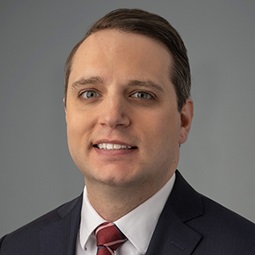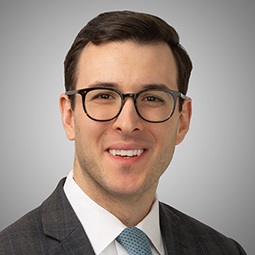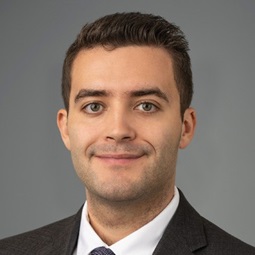Claims disputes are “core proceedings” in bankruptcy cases that are subject to the general jurisdiction of bankruptcy courts, subject to exceptions for personal injury tort or wrongful death claims. Under 28 U.S.C. § 157, claims disputes constitute, among other things, “matters concerning the administration of the estate,” “allowance or disallowance of claims,” and “other proceedings affecting the liquidation of the assets of the estate or the adjustment of the debtor-creditor or the equity security holder relationship.” But bankruptcy courts’ jurisdiction over claims disputes is not unlimited. Doctor’s Associates Inc. v. Desai (In re Patwari), a recent decision of the United States Bankruptcy Court for the District of New Jersey, illustrates what one might call the “in the money” requirement.
Background
Doctor’s Associates involved an adversary proceeding by a creditor, DAI, to enforce a prepetition arbitration award against the chapter 7 trustees for certain affiliated debtors. Prior to their bankruptcy cases, the debtors operated several Subway restaurant franchises pursuant to license agreements with DAI. Eventually, DAI commenced arbitration proceedings against the Debtors, asserting that the Debtors underreported and underpaid fees and royalties to DAI. The Debtors failed to appear in the arbitration, and an award was entered in favor of DAI terminating the franchise agreements and awarding damages.
Thereafter, the parties engaged in litigation in multiple courts over DAI’s ability to enforce the arbitration award. Among other things, DAI asserted claims under the Lanham Act based on the Debtors’ alleged violation of DAI’s trademarks. The Debtors asserted certain counterclaims.
In 2008, the Debtors commenced chapter 11 cases in the Bankruptcy Court for the District of New Jersey. DAI filed a proof of claim in each case of approximately $1.94 million based on alleged damages under the franchise agreements and the arbitration award, as well as its Lanham Act claims. The parties’ existing litigation was converted to an adversary proceeding between DAI and the Debtors in the chapter 11 cases. In 2009, the Debtors’ chapter 11 cases were converted to cases under chapter 7, and the trustees were appointed. The trustees filed reports indicating that no assets were available for distribution to creditors other than the potential proceeds of one unliquidated cause of action. Subsequently, DAI sought to continue the adversary proceeding to determine the validity of its claims against the debtors.
Analysis
The bankruptcy court dismissed DAI’s claims without prejudice without considering the merits of such claims. Among other things, the court held that DAI was expected to be completely out of the money because the bankruptcy estates had no assets for distribution to creditors. The court articulated three grounds for its holding.
First, the court held that, as a practical matter, there was no reason for it to hear the dispute. The trustees had not objected to DAI’s proof of claim, and (in accordance with section 502(a) of the Bankruptcy Code) DAI’s claims were deemed allowed unless and until an objection were filed. The court noted an important policy consideration: the debtors’ lack of assets meant that “no party in interest has an incentive to challenge the legitimacy of DAI’s . . . claims.”
Second, the court held that it lacked subject matter jurisdiction over DAI’s claims because they did not raise an actual case or controversy. With DAI being out of the money, the court viewed any opinion on the validity of DAI’s claims as being purely advisory. It would be “futile and serve no genuine purpose.” Accordingly—setting aside practical considerations and policy arguments—the bankruptcy court held that it lacked the power to consider DAI’s claims dispute.
Finally, the court noted that it had the affirmative power to determine not to resolve DAI’s claim because DAI was not receiving a distribution. The court dismissed the adversary proceeding without prejudice, holding open the prospect of future litigation in the event that assets were eventually brought into the debtors’ estates.
Conclusion
Doctor’s Associates is another case supporting the view that bankruptcy courts lack subject matter jurisdiction to resolve disputes over out-of-the-money claims. It adds to the list of reasons—including lack of standing—that may justify the refusal by a court to consider such a creditor’s claim. Doctor’s Associates is also a reminder that insolvent debtors have procedural defenses to claims and may be able to avoid litigation on such claims’ merits. Finally, it is notable that the finding of a lack of assets is a finding of fact. On appeal, findings of fact are entitled to significantly more deference than conclusions of law, meaning that decisions such as the one in Doctor’s Associates tend to be less likely to be reversed. Accordingly, out-of-the-money creditors should carefully consider the risks of dismissal before spending their time or money pursuing potential recoveries in bankruptcy cases.
Scott Bowling is an Associate at Weil Gotshal & Manges, LLP in New York.
Printed from
Weil Restructuring Blog

|
|
|
Do Bankruptcy Courts Have Jurisdiction Over Out-of-the-Money Claims Disputes?
Copyright © 2025 Weil, Gotshal & Manges LLP, All Rights Reserved. The contents of this website may contain attorney advertising under the laws of various states. Prior results do not guarantee a similar outcome. Weil, Gotshal & Manges LLP is headquartered in New York and has office locations in Boston, Brussels, Dallas, Frankfurt, Hong Kong, Houston, London, Los Angeles, Miami, Munich, New York, Paris, San Francisco, Silicon Valley and Washington, D.C.
|












